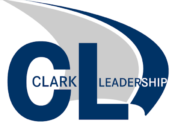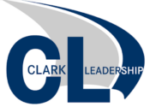The Happy Little Secrets of Leading at the Next Level
By John Starling, Partner & Chief Growth Strategist
The Happy Little Secret(s) of Good Leaders
The happy little secret of good leaders is that many in leadership aren’t in it for the results.
They’re in it for the leadership learning process itself, and the results they achieve stem from that learner’s mindset. Seen this way, leadership isn’t a means to an end, but a means unto itself.
Moreover, for many good leaders, the people we select, rally, organize, manage, lead, coach, mentor and advise are, to a large degree, just proxies: our team, company, division, office and growth strategies are just the who, where and how that we practice leadership and leadership development with, as we work our way through what I call the growth and leadership continuum. The why is growth itself: personal growth.
And, the happy little secret inside of that happy little secret is that no matter where you are on the growth and leadership continuum, the path to leading at the next level runs through you, the leader—and that’s great news, because that’s really the only thing we can control in life: ourselves.
Although good leadership may look to outsiders like a ladder, I see it as a “continuum,” because it never ends. It starts with self-leadership. Where it goes from there is up to you, and it all comes back to you.
But if leadership is on a growth continuum, then what does that look like from the inside…for you, from where you’re standing? And where on that leadership continuum are you, and how can you become an even better, more effective leader and lead at the next level?
The Growth & Leadership Continuum
Self-Leadership
Self-leadership is being self-aware, authentic and honest with yourself about where you are, who you are being, and how you’re showing up. It’s having the emotional intelligence to acknowledge and understand how you’re feeling, and to have a say in the matter, as opposed to being at the mercy of outside forces.
Within that context, it’s about actively guiding yourself toward an intentional vision of your best self. It’s a never-ending process of identifying and closing gaps, and working to live life aiming toward that best self you envision.
And it’s being responsible for the care of your self, knowing that it affects how you’re going to impact those around you.
One person at a time, the world is made a better place when we make a deeper practice of self-leadership, because we’re taking responsibility for the one thing we really can change.
Interpersonal Leadership
Many people are naturally gifted with deep empathy for others and are engaged in the practice of self-leadership while possessing the skills, experience and professional training to be a strong stand for another person—to listen without prejudice or judgment, and to advise from a compassionate, objective commitment to that person’s vision of his or her best self. Interpersonal leaders have the unique gift of being able to put themselves aside for the moment and create space in which another can show up.
These are the counselors, the mentors, the advisors, the professional coaches, the therapists …the guides through life, business and come what may.
Group Leadership
Some people are able to lead others and affect change at the group level. These are the team leaders, the small business owners, the facilitators, the sports coaches, the classroom teachers, the leaders of small faith congregations, and so many more.
They lead nimble cohorts that have a relatively simple communication structure: everyone is within easy reach of each other and their group leader. Everyone knows each other by their first name and understands each other’s strengths and weaknesses, and where they fit into the group in order to reach the objectives.
These leaders are seen. They are visible to their group members. It’s impossible not to be, and that’s reassuring to the people following them.
They practice self-leadership with a deep capacity for interpersonal communication and the ability to connect across the whole group with minimal dilution of their powers as they help the group progress.
Community Leadership
Others are able to lead and effect change at the community level—at their medium-sized company, as leaders in their town or their business community, and through the organizations, associations and causes where they put their leadership talents to work.
Every community around the world has them, and without them we might not even have a sense of community. They lead when a large number of people with similar interests are in need of leadership, and are willing to be led.
Community leaders are able to extend trust beyond the group level. Due to the number of people in any community, leaders can’t always be seen, but their presence is always felt. Their leadership style, values, actions and influence help create a lasting culture in the community…often even after they’re gone, leaving a legacy in their wake.
Enterprise Leadership
Enterprise leaders aren’t seen and felt by the rank and file of an organization on a daily basis, but they are “heard” by way of memos, meetings, texts, presentations and side conversations, along with every other means of indirect influence.
The leader’s words and intentions are shared across the organization (and beyond) via trusted channels and messengers who understand and support the goals and outcomes.
At the enterprise level, the imperative for the leader becomes the ability to lead leaders (and groups of leaders) on an interpersonal basis.
This interpersonal approach comes from a deep, conscious relationship within each leader to the practice of self-leadership—knowing that the people within reach of our influence will show up in large part the way we show up. At this level of leadership, people we may have never met, nor likely will meet, are following our lead.
Global Leadership
Some rare people lead people and affect change at the global level. I happen to believe that the times choose them, as opposed to the other way around, and the times seem to choose those who are practiced and prepared for the opportunity and responsibility.
Among the billions of people populating the planet, these global leaders are relatively few in number—yet they affect whole societies around the world with their words and actions. They are the globally recognized politicians, CEOs, oligarchs, celebrities, religious leaders, and the like. Their mere presence impacts this world and hopefully they use their power and influence to shine a bright light into its darkest corners.
When the times choose them and the stars align, they step up; and while leading at the global level, they lead themselves from the meta-level [self-knowledge, self-awareness, and self-regulation (emotional intelligence)]. In effect, the higher you go (or want to go) up the “ladder” of leadership, the deeper you must delve into self-leadership. Thus, the continuum.
Where are you?
When you look at the descriptions above, you might be able to identify the level at which you’re currently capable of leading, and you might have the intention to elevate your leadership abilities in order to lead effectively at the next level…and the next…
That brings to mind an adage often used by my mentor (Bill Clark) and my fellow coaches and mastermind group facilitators at Clark Leadership as we encourage people to do the work necessary to take their lives, businesses, programs, communities and world to the next level:
“What got you here won’t get you there.”
That’s a truism—and it’s also a koan* of sorts, because it begs the response, “well then, what will?”
Becoming competent at each new level of leadership as we ascend the growth and leadership continuum (whether as a means unto itself or a means to an end) enables us to cause an ever-larger and more diverse group of people to follow us, while this growth requires that we practice basic self-leadership and gain emotional intelligence at an ever-deepening level.
If it’s “lonely at the top,” this is why: Even though you may be leading a group, community, enterprise or millions of people, leadership is at its root quite solitary work that you do on yourself, but you don’t have to do it alone. In fact, you can’t. And that’s the happy little secret, inside of the happy little secret (inside of the happy little secret), of good leadership: you are not alone in this journey.
If you should choose to work with me as your coach, or the facilitator of your business mastermind group…well, that’s our happy little secret.
~John
*A koan (noun) is “a paradoxical anecdote or riddle, used in Zen Buddhism to demonstrate the inadequacy of logical reasoning and to provoke enlightenment.”





